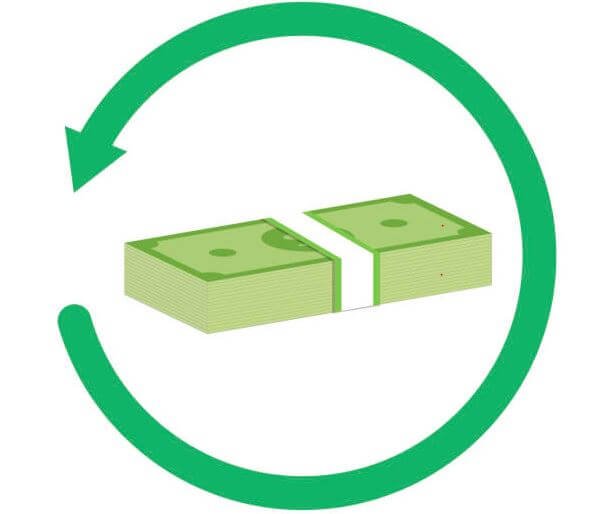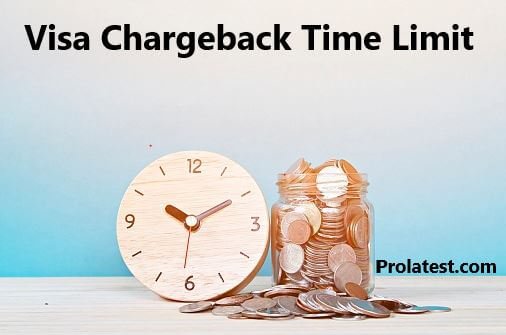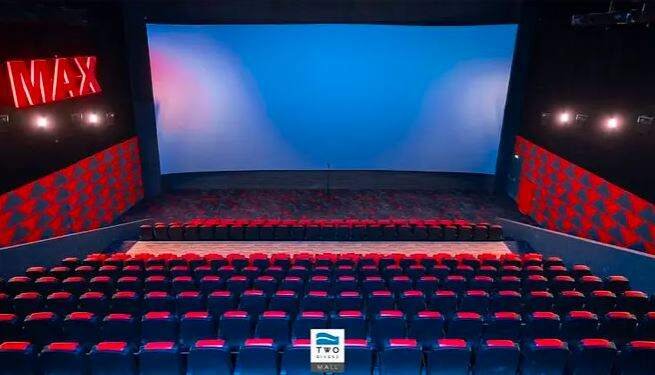Visa chargebacks are a way for customers to dispute transactions. They are usually initiated by the customer who is trying to get their money back from an unsatisfactory transaction. If you have ever done any business with credit cards, then you know that there is a time limit on how long it takes for your bank or issuer of the card to investigate and approve or deny the chargeback request. This article will focus on what Visa’s chargeback time limit is and how this can be used in your favor as a merchant!
Visa chargeback time limit is 120 days from the day of the original transaction to be disputed. It is worth noting that the Visa chargeback time limit may vary for different issues. Visa changed its chargeback time limit from 180 days to 120 days in August 2012. However, many visa cardholders make mistakes when it comes to counting these days. Counting these days is key to getting your money refunded, a failure to which you will not be able to blame your card issuer for any loss. Therefore, we are going to take you through the entire process on how you can stay within the Visa chargeback time limit.
Find out: Visa Chargeback Guide To Enhance the Safety of Your Money
Visa Chargeback Changes
For long, Visa cardholders felt that the chargeback process was not fair, untimely, and unclear. These complaints were heard by Visa company and made some changes to benefit its customers.
Visa introduced a new program called Visa Claims Resolution (VCR) on March 16th, 2018 mainly to achieve the following:
- Reduce the time to resolve a dispute from 180 days to 45 (chargeback)
- Improve processes for fraud disputes and merchant non-compliance claims.
- Enhance consumer protection with a simplified reason code structure that will remove over 600 codes. This made it easier for customers to file and win chargebacks.
- Make it clear when a chargeback can be reversed or not.
A data-driven management system at Visa

The company introduced a data-driven management system which, according to them, would make it easier to manage disputes. According to Visa, the new rules would be applied consistently.
Check out: Top 8 Key Factors to consider when making investment decisions
Visa claimed that these changes would reduce chargebacks by about 60%. However, some experts say this number is overstated because there were not enough merchants affected by the VCR program yet.
The company came up with this data-driven management system to automatically identify and block disputes that don’t meet the necessary criteria. This, the company argued that was a move to make it easier for those with genuine chargeback requests to be served on time.
The new system works by analyzing the data an issuer and Visa have concerning a transaction. With these data, the system then determines, in an automated way, if the request meets the minimum thresholds for which a Visa chargeback is accepted.
In this case, if the system determines that the provided information is within the threshold required for a chargeback, the chargeback is filed and sent to the merchant to provide more needed details like the shipping address, transaction details, and customer information.
Advantages of Visa Claims Resolution (VCR)
Reduction in the time taken to dispute chargebacks
- Currently, it takes around 45 days for a merchant processor and the merchant to respond to chargeback.
- The VCR process speeds up the whole process. The timeline has been shortened to 30 days. Therefore, the more the system gets improved, the timeframe will also be reduced.
Faster retrieval of lost revenue
If a consumer disputes their purchase, it can take months before they get paid back their money. This is because all that time, the merchant has to wait for responses from its processors. However, with Visa’s Claims Resolution (VCR), this time is reduced to 30 days. This decreases the amount of money lost by merchants and in turn, increases their revenue.
Improved customer satisfaction
More efficient communication between the issuer and merchant than through a traditional chargeback process.
With the VCR, merchants can expect to receive notification of a claim on average within 20 days. There is an automated process in place which authorizes and issues responses directly from Visa’s issuers.
Increased payment security
The issuer would not have access to any information that could help them identify the cardholder or transaction data
Steps To Ensure You Stay Within The Chargeback Time Limit
There are three main steps you should take when dealing with chargebacks:
Respond to the dispute within a given timeframe
The timeframe is typically around 30 days depending on your bank and card type. You can also contact Visa directly for more information on how long it will take to process your response.
Consult the experts
If you need help responding to any of these disputes then ask an expert to help you do so. This can be an online fraud management company like Fraud.net or a chargeback prevention specialist. These specialists will guide your business through the process in accordance with Visa’s rules and regulations.
Document all details correctly
Finally, ensure that all details are documented correctly to avoid any future disputes against your business. Especially if it gets out of hand by disputing too many chargebacks. In such a situation, you may incur more losses due to suspected fraud. The loss will still be on your side whereby instead of your chargeback request being granted, you will get fined.
What are the Visa chargeback time limits?
Visa starts counting the days after the date of the transaction processing. As a visa cardholder, you have a 120-day window within which you may dispute a charge on your card. However, some issues have a short window of up to 75 days. A 120-day window is allowed for the following charge issues:
- FrauLate presentment
- Fraud
- An incorrect transaction code
- Incorrect currency
- Incorrect account number, or transacted amount
- Duplicate charge
- Merchandise that’s not delivered
- Damaged or defective merchandise
- A canceled recurring transaction
Here are visa issues with a 75-day window to file a chargeback:
- A card recovery bulletin (for stolen, lost, past-due, or fake cards)
- Declined authorization
- No authorization on payments
- Invalid card data
What time do you have to respond to a Visa chargeback?
It is worth mentioning that most people confuse between visa chargeback time limit and time to respond to a visa chargeback. These are two different terminologies at Visa that should not be confused. Visa chargeback time limit is the allowed period within which a cardholder or merchant can drag out a chargeback. On the other hand, time to respond to a visa chargeback is the period allowed from the date of filing a chargeback, within which you must respond to all related queries. I hope the difference is now clear.
For Visa merchants and cardholders, you have up to 30 calendar days to respond to a Visa chargeback. Visa counts these days after the date when the chargeback was filed. Therefore, you should be careful not to get confused and have your money lost.
- The merchant has 30 days to follow up on a chargeback by providing representment.
- The visa card issuer has 30 days to initiate a pre-arbitration chargeback after receiving representment.
- Each party has 10 days to follow up on the arbitration after the pre-arbitration chargeback.
The Visa card issuer, which in most cases is the bank should constantly communicate to the merchant and cardholder at every stage of the process. The bank is given 5 days to provide documentation to the cardholder and the merchant detailing the different reasons why they made given decisions.
How to take advantage of the visa chargeback time limit
Visa chargebacks can either be a blessing or a curse. It hurts when you lose money to fraudsters who purchase your product using stolen credit cards and then file for the return of their payment with banks after which they will claim that these goods were never delivered at all. However, it is an advantage if you have genuine reasons to dispute a payment.
Doing quick research will give you access to the Visa chargeback time limit policy. The policy states that customers are given 120 calendar days from the date of the transaction in which they can file for a refund. This means that if your customer files a chargeback after this period, it is highly unlikely that their request for a chargeback award will be granted by banks.
While there are some online retailers who follow a policy of “no refunds”, it is better to use an open policy that will help you earn the trust and respect of your customers. Customers love it when they can return goods for any reason and get their money back in full or at least part of the payment.
In this way, the customer is happy to shop with you again and it will help your business grow as word gets around quickly that people can trust in your return policy. Having an open policy will also make sure chargebacks are excluded. This is because customers know they have time differences for refunds or returns based on their preference.
Final Words
Visa chargeback is a good way to claim your hard-earned money that was charged wrongly. Many Visa cardholders could lose their money charged for the things they don’t consider. Additionally, customers could be charged for undelivered merchants. Visa heard the plight of its customers and introduced Visa chargeback. However, you have to be careful if you want your chargeback to be successful and your money refunded.
For a successful Visa chargeback, you must adhere to the Visa chargeback time limit. This time gives the company enough time to investigate your claims and make a valid decision. If you file your chargeback request after the time limit, am sorry to inform you the chances of your cash being refunded are close to zero. Therefore, to be on the safe side, please adhere to the visa chargeback time limit illustrated in this article.
If you enjoyed reading this guide, please share it with your friends and relatives who might also be struggling with Visa chargebacks. Click on the icons below to share. Thank you.







